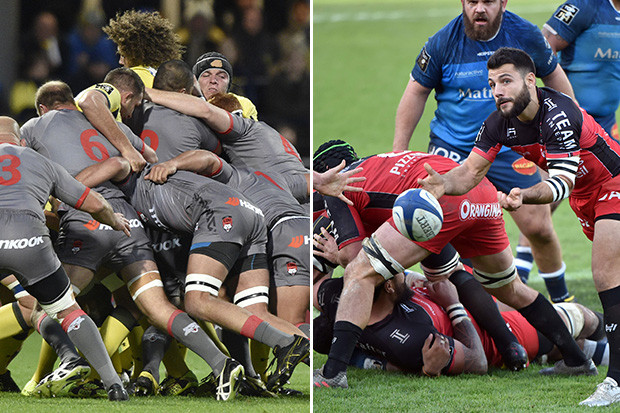The truth is that the only people who clearly understand the differences between football and rugby are Americans and some top English-speaking countries. The rest of the world usually has absolutely no clue what the differences are.
To a foreigner, they are basically the same game. People all over the world only see a bunch of men passing a ball around and pounding on each other to the ground. Americans do look a little bulkier and wear heavy clothes, but they all seem to be doing the same thing.
So, it’s quite shocking to learn that these are two very different sports, and there are some unmistakable differences between them. In this review, we seek to enlighten anyone who has never understood these differences. We hope this guide can help you identify which game is which.

Here Are The Key Differences
Number Of Players On The Field
This is one of the many key differences between Rugby and football. The difference in the number of players in each game is small but relevant nonetheless. Football has 11 players on the field for each team during a game, while rugby has 13-15 per game. Thirteen players are during the Rugby league, while fifteen play during the Rugby Union.
The Style Of The Game
You might be surprised to discover that this is also a substantial difference. While football is more of a patient game with a complex strategy, rugby does allow for plenty of fluidity and incorporates plenty of tricks from different games. Such maneuvers include ball-exchanges like in basketball, the body contact of football, and the running from soccer.
Like football, the object of rugby is to run around with the ball to the goal line of the opponent. In rugby, however, the ball has to be placed on the ground in order to score a point. You cannot place a ball on the ground in football; that could result in a fumble and a loss of possession for your team.
Scoring Rules
Now, these rules will certainly paint the picture of what the key differences between rugby and football really are.
If a football player is able to carry the ball all the way to the opponent’s goal line or if he catches it there, he has scored what is called a “touch down.” In this case, his team is awarded six points for this. The scoring team then has an opportunity to get in an additional point if they kick the ball to the goal post, which is known as conversion. They could also get two points if the ball gets advanced to the end zone through a run or a pass.
Now, in Rugby, a touchdown usually is called a try and it is worth four or five points; five for Rugby union and four for Rugby League. A conversion in Rugby is only through kicking the ball and it is only worth two points.
Time limit
A football game usually consists of four quarters, each being 15 minutes. There is also a half-time intermission that comes after the second quarter. In football, the game clock does stop often enough between plays.
Alternatively, while a rugby game is played in 40 minutes with a one 10-minute half-time at the twenty-minute mark. The clock only stops when there is a prolonged injury. These rules do allow rugby to be much more dynamic compared to football. However, in football, there is more time for the implementation of the complex strategies that come with the game.
Physical Demands
When talking about the key differences between rugby and football, we must mention the strength and stamina that is expected from the players on the field. They do deliver these completely differently in the two separate games.
In the Rugby league game, stamina is crucial. The game is more physically demanding when compared to football. It involves plenty of physical contact and, as such, requires a certain amount of quickness and thought combined.
On the other hand, American football is a strength-related game. In this game strength and speed are still very important, but even more so is the ability to read the field and strategize.
Ball Advancement
There are serious key differences between rugby and football when it comes to advancing the ball. While both of them require that the advancement is conveyed while running, football players do pass the ball forward once during a play. However, in rugby, it is more of a ball exchange where you can only pass the ball sideways or backward.
Field Size
It is worth mentioning that the fields in both of these sports should be rectangular and they must feature a goal post with some white lined markings to identify different parts, but they do differ in size. The rugby field is longer at around 328 feet, while the football field is shorter and measures around 300 feet, but it is also much wider.

Conclusion
Well, we hope that these key differences between rugby and football we have explained help to make things much clearer. They are both great games and have made the careers of plenty of athletes. They are both extremely famous in the US and Europe.







